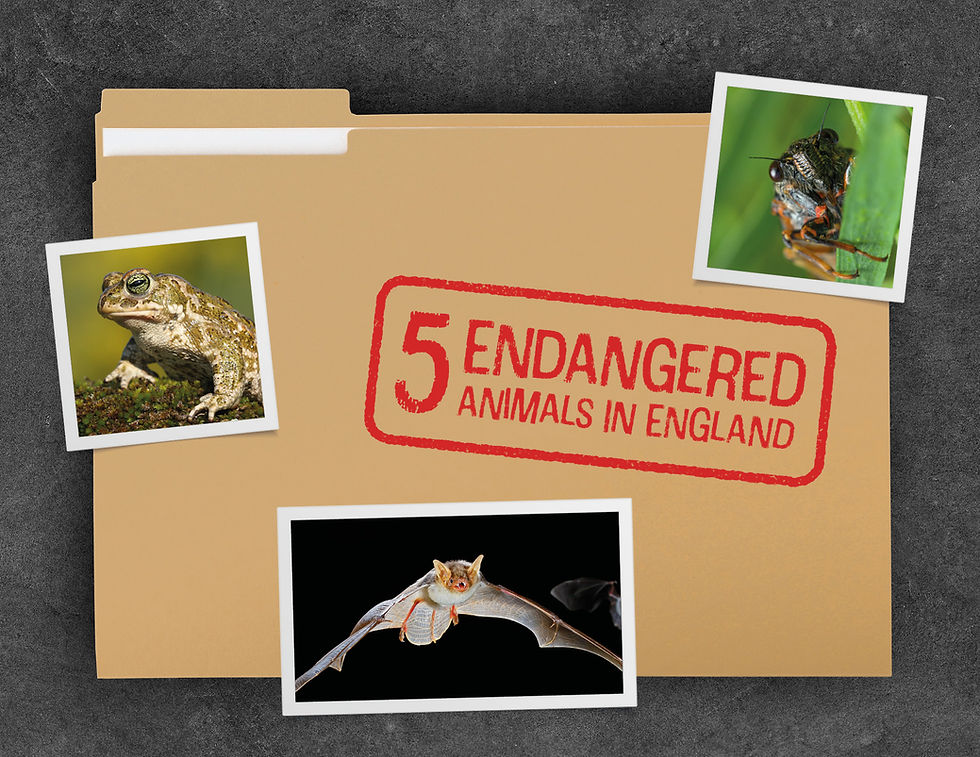Creepy-Crawly Animal Facts - Part Two
- Dane
- Oct 26, 2022
- 3 min read
Updated: Jul 30

We’re back for part two of our creepy-crawly animal facts series! As we get closer and closer to the spookiest day of the year, we’re getting in the mood for tales of toads that grow their young from their backs, lizards that squirt blood from their eyes, and creepy-crawly parasites. We hope you enjoy some of our favourite spooky animals that roam the earth…
Creepy-Crawly Halloween Facts

Lizards that shoot blood!
Animals have so many different ways to protect themselves against predators, and one of the spookier ways that the short-horned lizard does this is by shooting blood from their eyes. As well as being able to puff their body up to twice its size to intimidate attackers, the spiky reptile also shoots blood from a small duct in the corner of their eye. They can shoot it up to three feet away. As well as being able to control when they shoot blood, they can also shift their eyes to control where the blood goes. It’s a very effective way to confuse bigger predators and is also poisonous to wolves, coyotes, and dogs.

Ghastly-fish
Jellyfish are much more dangerous than they appear, especially the box jellyfish. Floating around the ocean like a ghost, they have a monstrous 24 eyes clumped into 4 groups of 6 eyes, giving them a full 360-degree look at their surroundings. Its 15 tentacles help make up its length of around 10 feet and each have around 5,000 stinging cells per tentacle. The sting delivers a toxic venom that attacks the heart, nervous system, and skin cells of its victims. It is so powerful that human victims have been known to go into shock and drown before even reaching the shore, and survivors are left with significant scarring. The sting is fatal to humans but, unless threatened, they only tend to use their stings on prey like passing shrimp and fish

Tongue eaters?
Parasites are some seriously scary critters and an especially creepy one is the tongue-eater louse. These isopod crustaceans hide in the gills of fish until they’re big enough, before crawling inside the mouth of fish, attaching themselves to its tongue and feeding on the blood vessels. The tongue then eventually drops off and the parasite replaces it. Females can grow to around an inch long, and males around half an inch. The tongue-eater is the only known case of a parasite functionally replacing the organ of a host. They primarily target snappers but have been found in several other fish species. The fish can use the louse as a pseudo tongue, almost like a prosthetic, and live fairly successfully with its new guest.

Back-grown babies
Toads are a staple Halloween animal. With their wart-like growths, slimy appearance, a popularity with witches, you can get spookier – or can you? The Surinam toad has some pretty creepy features that make it especially eerie. It has an incredibly flat shape, even being mistaken for roadkill, and this allows them to effective easily hide in the ponds of South America. Creepier, however, is the fact that they can store, incubate, and hatch between 60 and 100 eggs. The female’s back is incredibly sticky which allows the eggs to stay in place and the female forms an almost honeycomb-like structure around the eggs to protect them. The young hatch and continue to develop under the mother’s skin before wriggling and pushing through to the outside world.
There you have it! We hope you had fun learning about some truly spooky animals in this two-part series. What was your favourite creepy-crawly fact? Let us know in the comments and we hope you have a truly spooktacular Halloween!




Comments